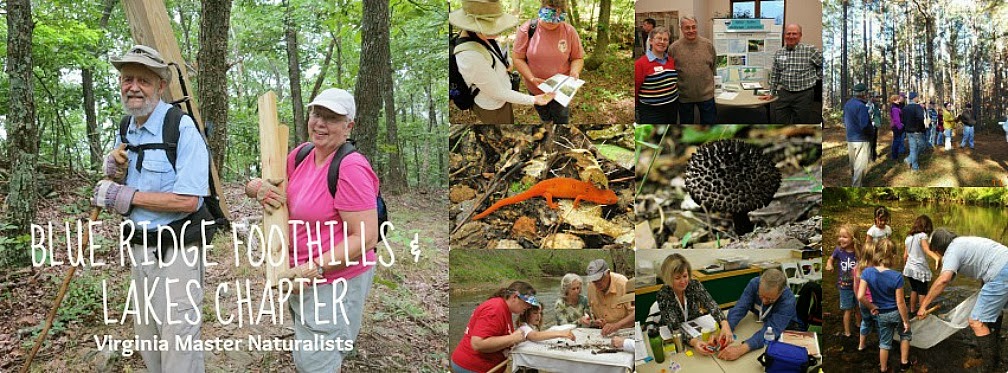The Blue Ridge, Foothills and Lakes (BRFAL) Chapter of the
Virginia Master Naturalists was very lucky indeed to have Dr. Carol Croy of the
US Forest Service give us a one hour presentation on Ecological Restoration in
the George Washington and Jefferson National Forests on the evening of January
16th. Dr. Croy has been employed by the
US Forest Service for 22 years as a forest biologist and received her doctorate
in forest ecology from Mississippi State University. She specializes in avian ecology and fire
ecology.
Dr. Croy oversees approximately one million acres of the GW
and Jefferson National Forests. Oak
forests are dominant. Oak forests also
include hickory and pine. There are also
predominantly pine forests. Pine forests
are fire dependent, especially table mountain pine which requires fire to open
cones for seed propagation.
The National forests also include grasslands and
shrublands. These type areas are vital
to support various type of flora and fauna that thrive in this type
environment. These areas only comprise
about 1% of the GW & Jefferson National Forest land. Additionally there are spruce and northern
hardwood areas. These areas are usually
at higher elevations on north facing slopes.
Although we are all aware that the mature American Chestnut
trees have been virtually blighted out of existence in Virginia, what you might
not know is that American Chestnut still survives as living root systems and as
shrubs. Biologists are working with these
shrubs by splicing in blight resistant sections for other American Chestnut
trees in attempt to restore our chestnut forests which have been vital for the
existence of many species.
Dr. Croy discussed silviculture. In case you are not familiar with the term
silviculture it is defined as “the art and
science of controlling the establishment, growth, composition, and quality of
forest vegetation for the full range of forest resource objectives.”. This would include selective
clearing and controlled burns. This
allows re-establishment of undergrowth which will support renewed growth of
endangered plant species and habitat for endangered animals.
The BRFAL group found Dr. Croy’s presentation very
interesting. Dr. Croy agreed to lead our
group on a field trip some time in the future.
She was presented with a BRFAL ballcap as a token of our appreciation.
Rich Brager



No comments:
Post a Comment
Thanks for your comment and interest! NOW GO OUTSIDE!